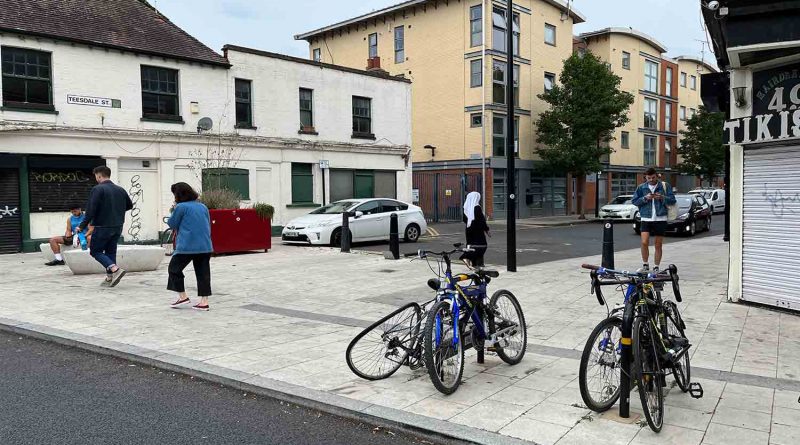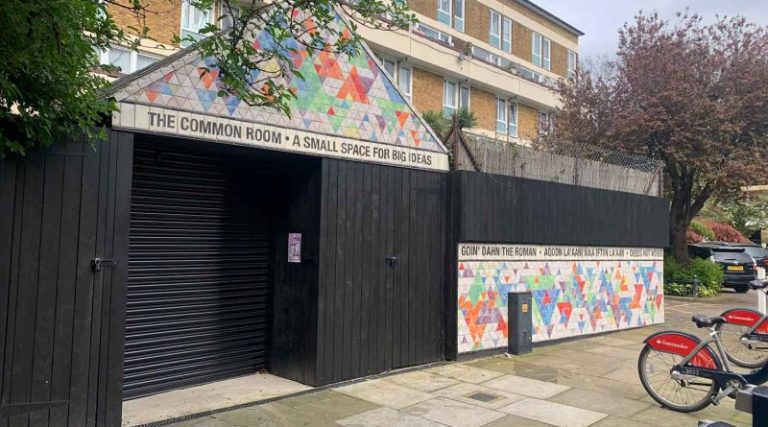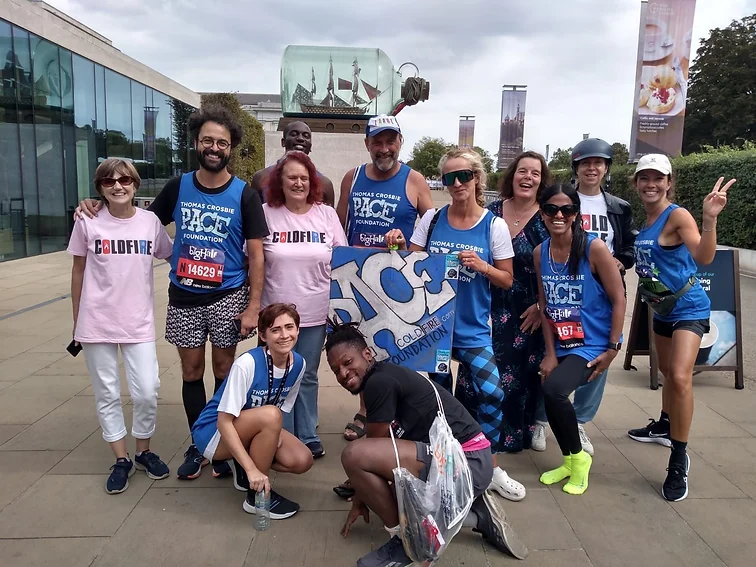Liveable Streets: The case for reversal
We hear from those supporting Mayor Rahman’s plans to reopen our roads
Since its inception in 2021 Liveable Streets has been a divisive topic in Tower Hamlets, creating polarised opinions and pitting neighbours against each other.
The Council’s proposed reversal of the schemes has prompted an outcry from pro-Liveable Streets voices, but as a decision from the Mayor looms, we take a more nuanced look and speak to those defending the reversal.
Contrary to the original intention of the Liveable Streets programme to reduce air pollution, the Council argues that aspects of the schemes are adding to congestion on our main roads.
As part of Mayor Rahman’s pledge to tackle climate change, Tower Hamlets Council is proposing to ‘reopen our roads’ by removing elements of the existing Liveable Street schemes that it says have added to congestion on main roads and limited access for emergency services and vulnerable residents.
The proposals are guided by the Council’s strategic plan, in which Tower Hamlets pledged to be a carbon neutral Council by 2025 and a carbon neutral borough by 2045.
Currently, Tower Hamlets is the fourth highest polluting borough in London, and its residents are exposed to above-average levels of pollution.
According to Council data from 2019, 7.5% of the borough’s population is exposed to nitrogen oxide levels above the government’s Air Quality Strategy objective, and 100% of our borough’s population is exposed to PM2.5 (particulate matter) concentration above the World Health Organisation’s guidelines.
As Elliott Weaver, Conservative party member for Bethnal Green & Bow, said: ‘The schemes have not cut traffic, simply moved it to different roads and in most cases unsuitable roads.
‘Those that drive for work and groups with protected characteristics have seen access restrictions make their life harder.’
Douglas Thackway, local resident and business owner, said: ‘As someone who has only briefly owned a car in London, and spent most of my time cycling and walking, I am 100% pro more bike lanes, better walking infrastructure, greener and better public realm and more and cheaper public transport. I am pro school streets too.
‘But I think we need to listen to those who will be badly affected by Liveable Streets rather than just saying ‘adapt or tough.’’
In its strategic plan, the Council stated that it wants to ‘avoid penalising those in our community who drive, who in many cases are not responsible for the bulk of air pollution.’
Thackway is the owner of Doug’s Dogs, a dog walking and daycare business in Bow. He said: ‘I definitely felt that there was an anti-driver side of the campaign [in favour of Liveable Streets], with terms like ‘rat running’ assigned to anyone who drove through the area.
‘The existing road closures are fine, but the proposed closures on Roman Road and Coborn Road would have added an extra 15 – 20 minutes to our journeys and impacted how many dogs we could pick up.
‘For small businesses like mine that rely on driving, some of the proposed roadblocks would have been yet another hit for business, especially after Covid and the cost of living crisis.’
In Mayor Rahman’s manifesto, he pledged to reverse the ‘botched’ Liveable Streets road closures while implementing a ‘bold programme to go green’ including the installation of charging points for electric vehicles, the improvement of insulation standards in homes, the development of green heating systems on housing estates, and the expansion of tree planting throughout the borough.
However, it is unclear whether other elements of the Liveable Streets schemes, such as camera controlled bus gates, will remain.
As Weaver stated: ‘What remains should be decided by the local community. Bus gates are popular with residents and still allow for emergency access.’
The Council has come under criticism for the proposed removal of costly roadblocks during a cost of living crisis, but those in favour of reopening our roads argue that halting the implementation of further roadblocks will actually save money.
As Weaver explained: ‘The money and resources assigned for road closures can be put for better use in other schemes to encourage and make cycling easier – such as bike storage, rental schemes etc.’
Thackway added: ‘It would be madness to spend money ripping up the Old Bethnal Green Road block now, but I don’t think any more road closures should go ahead.’
A lack of clarity about which elements of the schemes will be reversed has led the issue to become highly divisive in our neighbourhood: ‘When groups of people stand in two corners shouting at each other and there’s no nuance then a compromise can never be reached … I’m against people who think it’s all or nothing and there’s no grey area,’ says Thackway.
Echoing a similar frustration, the campaign to Save Our Safer Streets Bethnal Green wrote in their open letter to Mayor Rahman: ‘We think the current consultation is flawed, with the limited ‘keep’ or ‘remove’ options. We should be looking creatively at improvements and shared solutions.’
To gain a deeper understanding about the proposed reversals of aspects of the Liveable Streets schemes, Roman Road LDN posed the following questions to the Council:
- Tower Hamlets produces the fourth highest levels of total carbon emissions in London.
- How will you achieve the Council’s target of being net zero carbon by 2025 and bring pollutant levels to below EU limits?
- How will you measure this progress?
- You say: ‘The Council supports encouraging less car use through improved public realm.’ What changes will be made to improve the public realm?
- How will the benefits of reversing Liveable Streets schemes outweigh the costs? How much do you estimate these costs to be?
- You say that aspects of Liveable Streets schemes will remain in place, what are these?
- What are your thoughts on TfL’s statement that the reversal of Liveable Streets could impact future funding for the borough?
- What would you say to the people who said the lack of consultation in Bow was undemocratic and who demonstrated against the removal of the bus gate on Antill road?
- Do you have evidence of emergency service response times being hindered by physical road closures? Will you be in dialogue with the emergency services during the proposed reversal?
In response, a spokesperson for Tower Hamlets Council said: ‘The Council is upholding its duty to consider the data gathered throughout the consultation period. We will be giving an update in due course.’
In the strategic plan published in August 2022, the Council said it would decide whether to reopen the roads in September 2022 and implement the decision in October.
The decision was due to take place during a cabinet meeting on Wednesday 28 September, but in its agenda released last week the topic of Liveable Streets appears as an announcement rather than a decision, which suggests that the decision date has been delayed.
Jane Harris from Save Our Safer Streets campaign group says: ‘It’s anyone’s guess what the announcement could be but we are expecting it could include the consultation results [from the Reopen Our Roads consultations held last month].’
The cabinet meeting will be held on Wednesday 28 September at 5.30 pm at the following location: C1, 1st Floor, Town Hall, Mulberry Place, 5 Clove Crescent, London, E14 2BG.
If you liked this article, you can read the previous piece in our Liveable Streets series about TfL’s opposition to the schemes’ removal.









£70,000 wasted on a consultation to remove £2 million of public improvements in Bethnal Green. While we’re all suffering from the cost-of-living crisis, Lutfur Rahman has plenty of our money to burn.
As a business owner and also lived in area and went to school in the area i feel that i have not been informed about meetings and plans fully. Plus the businesses around us have not either. I was not completely opposed to some of the ideas but there was not one version what was clear to what was going to be done. When i went to a couple of meetings , which i was allowed to go, no one could even answer some of my questions. It seemed not inform both the resistant and business owner what exactly the proposal was going to do. This is what people was angry about. Not being clear what people wanted and to say. Saying one thing but ignoring any ones view. Even at one time some had put a post up involving us and it was totally false. Some people even refused to speck to us or use our store. There is a middle ground that everyone would agree to, if we just talk to everyone and find out concerns. We just have to try harder and listen better. PEACE NOT WAR
What supporters of the scheme continue to refuse acknowledge is how disrespectful the old plans (Roman Road Bus Gate) were to disabled people.
The area has a large number of blue badge holders, but the former administration shot us in the back by not originally allowing blue badge holders through bus gates. Eventually, after a few assurances that the Council would be taken to court to test this issue against the Equality Act, John Biggs buckled.
It would take a disabled child with Cancer, another 15 minutes to go to Great Ormond Street Hospital, and it would prevent the local children nursing team from reaching his address without adding another 25 minutes to their journey. Unfortunately, they are not in a position to completely transition to cycling due to the equipment they carry.
It is also disheartening to see fire appliances and ambulances being forced to drive the wrong way down Old Bethnal Green Road after its partial closure. If the emergency services feel they must balance such serious risk like this, then I whole-heartedly agree with the removal of offending schemes. They should not be forced to make such critical decisions. I absolutely understand people’s opinion if their loved one was delayed access to emergency services due to a LTN. Better planning should have gone into the schemes. For £2 million, I thought it would have been spent better and prevent such issues.
Furthermore, the original consultations did not explicity provide a way for respondents to say no to proposals. How undemocratic is that? I agree when people say the current Mayor was voted in based on his mandate which included a rethink of Liveable Streets, Liveable Streets was a key pledge of his (I did not vote for him). Many in Bow agree that these proposals were presented to very few residents. The Council refuse to show how they have publicised workshop events, why is this?
Tower Hamlets Council has a history of running dodgy consultations like the Housing Transfer votes where Labour councillors persuaded Council tenants to vote to transfer their properties to housing associations. And by looking at how Clarion Housing Group have treated Bow residents, it’s clear to see how damaging that campaign was.
What we need is complete rethink and be considerate of others. Shooting pollutants to main roads, isn’t fair for people living on those roads.
After yet another car crash on Tredegar road last week something still needs to be done to stop cars coming off the A12 and using our small roads as a through path to get into the City.
The bus gate didn’t and won’t work. I purpose. Closing both the northbound slip roads to the A12. Thus surely then it will keep the traffic to the A11 or even down to the A13.
The southbound slips have to stay open so the 8 can go through. But surely by closing the north. It would reduce the traffic. And also make it safer to cross the A12 to go towards fish island.
We know that the ‘consultation’ to reverse the Liveable Streets initiative was corrupt as not all people affected by the decision were consulted.
Has this been another case of the Mayor Lutfuh Rahman doing his own thing without going through the proper processes.